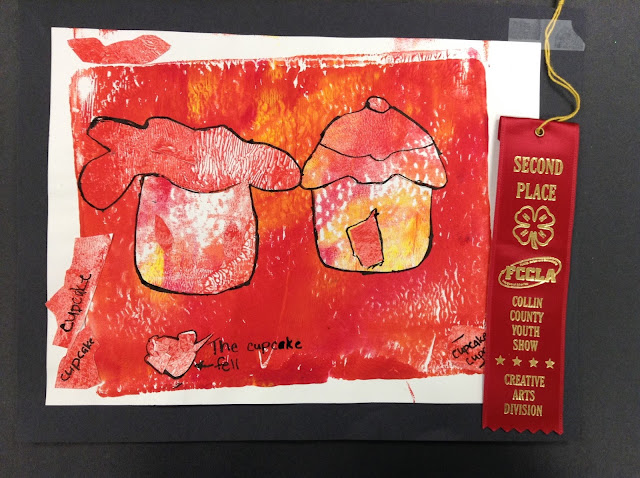Confessions of an Art Ed Snob, Part One: Cookie Cutter Art
 A while back, a family emergency led me to take (what I thought would be) a temporary leave of absence from my K-8 Art position. A change like this can offer you a different perspective and teach you some surprising things. I never imagined all I’d learn about teaching by not teaching!
A while back, a family emergency led me to take (what I thought would be) a temporary leave of absence from my K-8 Art position. A change like this can offer you a different perspective and teach you some surprising things. I never imagined all I’d learn about teaching by not teaching!
But this time away from the classroom gave me some much needed space to reflect…. not only on how I teach, but why. It also gave me opportunities to observe other teachers and students in different settings, and to really listen to them. It’s been humbling…. and I learned a few things about myself in the process.
In particular, I learned that I’ve been a snob…. an Art Ed Snob.
Education and training are designed to help us be better at what we do. But if we’re not careful, they can contribute to a sort of prejudice against those with less training, and cause us to arrive at some faulty conclusions. Recognizing this has changed some of my ideas about teaching art.
One such idea involves ‘cookie cutter art’. Even the term is derogatory…. an oxymoron where ‘art’ implies something that’s original, yet ‘cookie cutter’ implies a copy…. or (worse yet) lots of copies. But looking beyond the negative slant implied by its name, it’s worth defining what ‘cookie cutter art’ actually is and what its potential benefits could be.
‘Cookie cutter art’ typically refers to tracers and templates, teacher-directed or ‘guided’ drawing, and paint-along sessions or parties where everyone paints the Same. Exact. Thing. Projects done by these methods often lack a uniqueness that’s found when kids, or adults, are left more to their own devices. I confess that I’ve been guilty of having a (strong) bias against this kind of art instruction (see this example from my blog )…. but recently I’ve softened my stance.
Reflecting on the importance of art education led me to a more neutral position on ‘cookie cutter art’.
We all bring a different set of reasons to what we do, but my own personal ‘why’ of art education is this: I believe so strongly that today’s world desperately needs creative problem solvers, innovators, and thinkers. Art develops these skills by expanding our tolerance for uncertainty and our willingness to embrace mistakes as opportunities for learning. These are must-have qualities for successful problem solvers!
Art education also inspires creativity and gives students the tools they need for self-expression, through instruction in art history, theory, methods, techniques, and use of materials. Art education is more essential now than ever before, and because of this, I’ve come to believe we need to welcome it in all its forms.
If you’ve been blessed with formal training in art education, then by all means you should use every skill you’ve got to deliver the best art instruction you can to your students. But not everyone who believes art is important has this training, and not every school has the budget to offer art as a regular part of its curriculum. In times like these, teaching needs to fit not only the student, but also the teacher. And as with art itself, there is more than one right answer.
How about the parent volunteers who have little or no art experience themselves but see the need for kids to have art in their school day? God bless them! They should be encouraged to usewhatever they need in order to share an art experience of any kind, and not be judged for a lack of originality someone might see in their students’ work. Even if the only thing a student takes away is how to follow step-by-step instructions, that’s a life skill in itself. We need to remember that whether it’s a case of limited experience, limited time, or a limited budget, we’re all just doing the best we can with what we’ve got to work with.
So, is ‘cookie cutter art’ only half-baked in terms of what’s possible with art instruction? Well, you could say that. But I’m convinced that it’s still worthwhile. For kids, this art form with a bad reputation still develops eye/hand co-ordination, dexterity, fine motor skills, and the ability to follow sequential steps. It has the potential to build cultural literacy and help students experience success.
For adults who see themselves as ‘artistically challenged’ a paint-along party (complete with a glass of wine to release their inhibitions) may be the only way they would ever consider picking up a paint brush to potentially discover a new hobby or simply just enjoy an evening of ‘art entertainment’ – both valid outcomes in their own right. These kinds of events can also be just what’s needed to instill a confidence that can later be built upon and developed.
While most of our students won’t go on to have a career in the arts, every one of them can benefit from developing their creativity and self-expression, no matter what path they choose to pursue. When we provide art instruction to whatever level is the best of our ability, we encourage this kind of growth.











